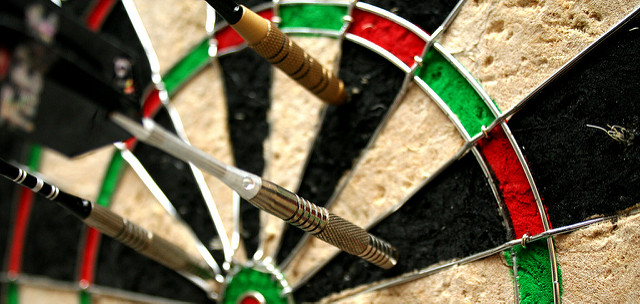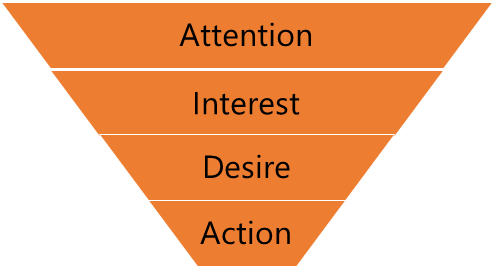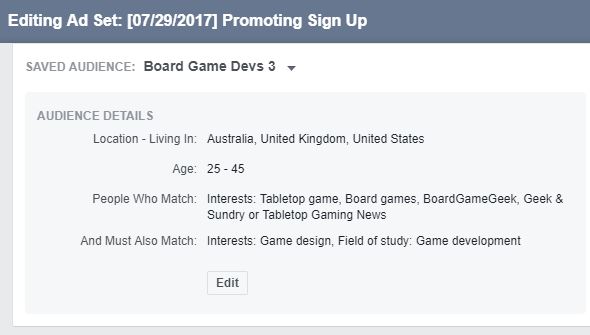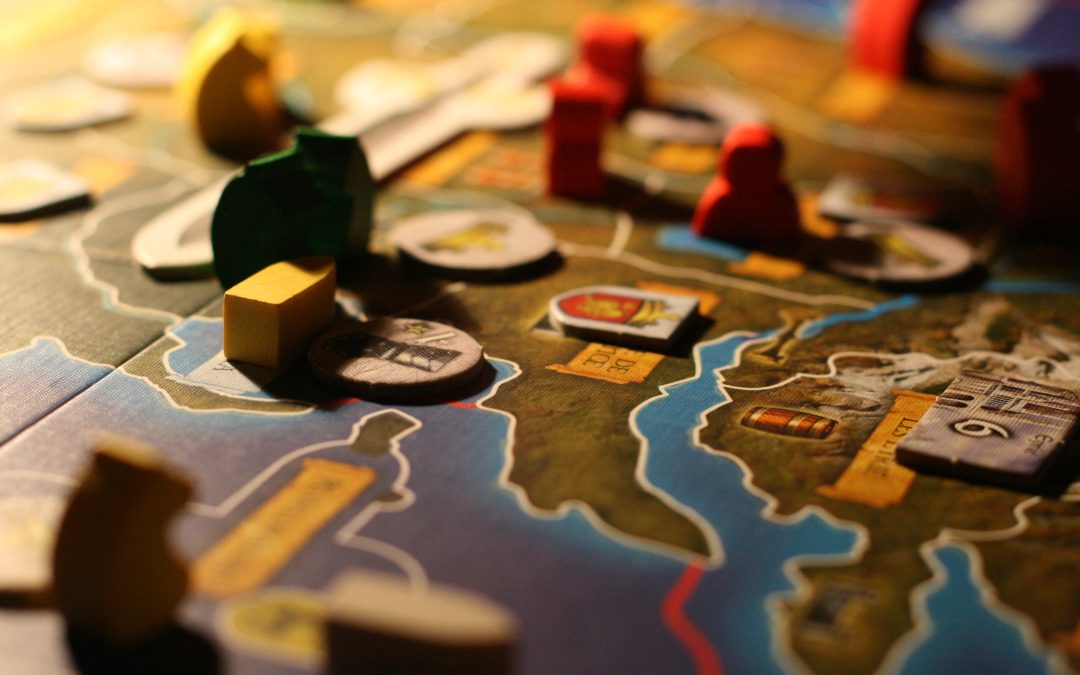This post first appeared on Brandon The Game Dev’s blog!
Self-publishing a board game is a long, drawn out process. Some of this goes back to the process of creating your game, getting it manufactured, and raising funds. Yet if there were a single thing that self-publishers regularly fail at, it’s marketing.
Marketing covers a wide array of activities that convince people to care about and eventually buy your game. Yet that definition doesn’t do it justice. Marketing is best understood as an ongoing process that breathes itself into everything you do as a self-publishing board game developer. As an example, look at this old project timeline for Highways & Byways. That gray bar at the bottom of the chart that stretches from the beginning to the end is labelled Marketing.

Marketing is something I put tons of time and thought into. I’ve graduated with my MBA and I’m a published researcher in the subject of online viral marketing. Even still, there is so much to learn that even with that background, I have a hard time getting my arms around marketing as a whole.
For that reason, this is going to be a long post. I’ve broken it into 12 distinct sections for the sake of readability.
- Targeting
- Attention, Interest, Desire, And Action
- Product
- Your Niche
- Price
- Process & Logistics
- Promotion – Core Concepts
- Promotion – Outreach
- Promotion – Reviews
- Promotion – Distribution
- Promotion – Kickstarter
- Promotion – Advertising
Targeting

There is no perfect product. There is no perfect audience. When it comes to marketing, there is no way to make something that is objectively the best in all situations. Because value is so subjective, what you need to focus on is making the perfect product for a very specific audience.
In board gaming, there are lots of little communities. Remember, the board game community is not a monolithic singular entity, but rather a whole bunch of different mini-communities with interests that roughly line up. For example, I’ll never get people to play Twilight Struggle with me at a party, but Codenames…now we’re talking. All the considerations that go into making a game – length, weight, price, art style, gameplay, packaging, and so on – needs to be tailored for a very specific audience. Alternatively, you can make whatever you want and just find the perfect audience later. Both approaches work and have different pros and cons.
The goal of marketing, especially when you’re small and just getting started, is not to broadcast your message. Until you have a big media presence, you can’t really use “the hype machine” to your advantage. You just don’t have the power to do that. You can, however, target a very particular audience – this is the best use of your limited resources and it’s much more effective. Don’t broadcast. Narrowcast instead.
Attention, Interest, Desire, and Action
I’ve mentioned the AIDA model before in How to Get Big on Twitter as a Board Game Dev. Much of what I said there bears repeating.

AIDA stands for Attention, Interest, Desire, and Action. When you’re a marketer, the first thing you need to do is get people to know you exist – attention. Then you have to make people care about your game – interest. If they start to want your game, that’s a good sign – desire. Next, they get on your website or Amazon with intention to buy – action. Marketing is a slow dance. You have to very slowly build your reputation.
The idea here is that marketing is not just about getting attention and targeting your audience well. No, it’s about convincing people to buy your game and to talk about. This is a multi-step process and you need to understand that. You cannot simply shout about your game into the void of Twitter and pray for the best. You need to create a “sales funnel.”
Here is an example of a sales funnel:
- Use social media like Twitter, Facebook, and Instagram to “generate leads” or garner Attention.
- Ask people individually if they’d like to sign up for your newsletter. If they say yes, that’s Interest.
- Use your newsletter effectively to create Desire.
- Once you’ve created desire, ask them to take Action, like backing your Kickstarter.
There are a million ways to do this and I can’t tell you the best. In fact, I’m still tweaking, learning, and growing all the time on this because I’ve not yet perfected my sales funnel.
Product
If you look on Board Game Geek, you’ll find that there are so many types of games out there. It’ll make your head spin. You want to know exactly what sort of game you’re making so that you can select the ideal target market and tweak around them. If you can’t describe your game, you’re in deep marketing trouble.
I suggest you look on Board Game Geek to find similar games to yours. There will always be similar games. Know how to make comparisons of your game to other games. Highways & Byways, for example, is a racing game with a board that looks like Ticket to Ride crossed with a highway map.
Know how to describe mechanics that are in your game and see who it appeals to. Some people dislike “take that” mechanics because they’re too mean-spirited, such as the well-regarded reviewer, Rahdo. It’s no use selling a game with “take that” mechanics to him, then, is it? Likewise, some people really, really love “take that” mechanics and they’re the ones I sell War Co. to.
Know exactly who you’re trying to appeal to. This determines your target audience. Your target audience will differ with each game.
Your Niche
The intersection of your product and your target makes your niche. This is a special place in the market that you occupy better than anyone else (ideally). Your niche in the board game industry is your competitive advantage. You want to own a niche. You want to scratch a particular itch for a particular person better than anyone else.
When you have the perfect product for a specific target, that’s how you get a niche. When you have a working sales funnel that your target audience responds to, that’s how you turn a niche into cash.
Price
Price is not terribly important. I know, blasphemy, but bear with me for a second. If you’re making the perfect game for your niche, your customers are lot less likely to nickel and dime you. For that matter, in my observation, board gamers are willing to spend money hand over fist for a lot of new games. That’s why you see a lot of big titles retailing at 70, 80, or 100 dollars.
The degree to which customers make decisions based solely on price is called “price sensitivity.” Board gamers aren’t all that sensitive to price, and here’s some proof…

Process & Logistics
Marketing is more than simply product, niche, pricing, and setting up a marketing system. It’s also about the subjective experiences that people have while they’re dealing with you. It’s also about what people think about when they hear about your game, when they hear about your website, and when they hear your name. This can all be classed under the bailiwick of “branding.”
How do you control your perceived branding? Yes, your website, logo, and all that stuff matters, but let’s talk about four specific logistics processes which affect how people perceive your brand:
- The sales process. Everything about how you approach people affects your brand. From the language you use, the venues you reach out to people through, and the entire process by which you persuade people to buy your product falls under the sales process.
- The buying or pre-order process. The website or offline sales channels you use to facilitate buying or pre-ordering affect how people see you. You want purchasing to be as seamless as possible so you appear professional.
- The fulfillment process. You need to fulfill games as efficiently and cost-effectively as possible. You want people to think of you as someone who keeps their promises.
- The returns process. If people decide they don’t like your game, you need to have a seamless return process. People who return your games but have a good experience returning the game will have a more positive view of your brand. They might choose to buy from you later.
While processes and logistics may seem just like means to an end, it’s important that people feel like they’re being treated well at every step of the process. This is an important part of marketing because these processes will determine your reputation.
Promotion – Core Concepts
Wikipedia says that “[p]romotion covers the methods of communication that a marketer uses to provide information about it’s product.” In short, promotion is how you spread the word about your business. When you’re a first time business owner, or especially a first time game dev, mastery of promotion is absolutely critical to your success. That’s why half this guide is dedicated to promotion and promotion alone.
Promotion is a big tent that covers a lot of different concepts which I cover in more detail below. The first is outreach – how you find first-time customers (also known as “lead generation”). One very specific type of outreach that is critical in the board game industry is the review process. Then you have distribution, which tends to overlap with promotion in some critical ways. Kickstarter itself, which many people falsely see as the means of succeeding in the board game industry in and of itself, is a form of promotion. Finally, there is also advertising – a very effective and nuanced form of promotion that tends to scare people off because it costs money.
Promotion – Outreach

Outreach is how you find people to care about your game. It is how you find your target and tell them about your product so that you can carve out your niche. Some people call this “lead generation.”
There are a number of great ways you can run an effective outreach campaign. You can use social media, go to conventions, do an email newsletter, start a chat room, create a Facebook group, and even advertise. While there are some methods that are more effective than others, you want to choose a form of outreach that you like and really stick to it. Just try one or two forms of outreach at first and work your way up if you find that you have enough time to do more.
Social media includes Twitter, Facebook, Instagram, Snapchat, and other popular websites where people tend to hang out. This is what people immediately jump to when they think of outreach. However, mastering social media is a challenge all of its own and that requires nuanced thinking which I spell out in Setting Up Social Media as a Board Game Dev: A Primer Course. This is the most approachable way to find and reach out to your target audience, but it’s also a fantastic way to get ignored in the unending shuffle of these constantly noisy networks.
You can also meet a lot of people very quickly by going to board game cons. By meeting people face-to-face and getting contact information such as phone numbers and email addresses, you can get reach out to lots of people in a short amount of time. Cons, however, are intimidating, cost a lot of money, and take a lot of time. As I have a full-time job and can’t take off that many days, cons are not right for me most of the time – though I am beginning to seek out more weekend cons. Don’t write them off just because they don’t work for me yet!
Email newsletters are a great way to reach out to people, too. You have to ask for a lot of email addresses and put out a regular, high-quality newsletter with a service like Mailchimp. It’s tricky to do both of these things, but email is by far one of the greatest ways to contact people online. Given a choice between a mailing list of 100 and a Twitter following of 1000, I would take the mailing list every single time – no contest. I have personally had great results with my newsletter (which you should totally sign up for).
I cannot begin to list all the different forms of outreach. This aspect of business rewards creativity and hard work. As long as you can reach out to a highly targeted group of people and keep in touch with them on a systematic basis, you’re well on your way to succeeding with outreach.
Promotion – Reviews
Reviews warrant their own section as a very specific form of outreach. They are such a critical credibility-builder for new game devs. Good reviews convince people to buy your game. The occasional bad review still gets your name out there for others to discover you later, plus it makes you look more authentic.
Use Reddit, Board Game Geek, and social media to identify reviewers who fall within your target market. You’ll want to send games to them when it comes time for the review stage of your game’s development. If the reviewer is a professional with an engaged audience and you select based on them falling within your target market, you have a good chance of getting a good review that is seen by people who were already predisposed to like your game’s style from the get-go.
Promotion – Distribution
Distribution involves ways that your game is seen outside of just your website or company Amazon account. It is sometimes helpful to have third-party retailers or subscription boxes sell your game on your behalf. When you’re starting out, the exposure alone can be extremely useful to you. Good distribution gets your game seen by more people.
Want to know a secret? This is actually something I’ve bungled on War Co. in the past, so I don’t want to purport to be an expert on this. I encourage you to ask questions about the ideal way to distribute your game and do better than I did my first time.
Promotion – Kickstarter
Kickstarter is the last step in a long marketing dance for a lot of game developers. Your Kickstarter campaign is generally only the Action part of AIDA. Getting people to pay Attention, growing their Interest, and cultivating Desire – those are all up to you. Kickstarter is nothing more than a struck match on a pile of tinder that you assembled yourself.
That said, about 30-40% of backers tend to find you through the search, meaning Kickstarter is a good form of outreach. A lot of people who don’t care at all about social media are trawling Kickstarter in search of the newest new. Still, the degree to which Kickstarter contributes dollars-wise tends to pin itself to how much of an entourage you bring on your own.
I think it’s also worth mentioning that $1 rewards are one of the best things you can have on Kickstarter. Yes, it makes your backer count go up, which is itself a good thing. More importantly, though, once the campaign is done, you can ask everyone to fill out a survey – meaning you can ask for email addresses if you have a newsletter. Kickstarter is not just a way of convincing people to give you money, it can also be a way to capture and hold attention for future games.
Promotion – Advertising
Advertising is the last thing I wanted to cover. People tend to get spooked by advertising because they hate the idea of giving up their hard earned cash for something abstract. Plus, it’s super easy to get burned by advertising and you see a lot of smart people talking bad about advertising because they failed to understand more critical, basic marketing lessons. Still, the potential time savings might just be worth a few hundred bucks in Facebook ads. You’d be a fool to dismiss advertising entirely.
Facebook and Board Game Geek tend to be pretty good places to advertise board games. I’d stick to Facebook when you’re new, though, because Board Game Geek has a really high minimum expense. Facebook doesn’t require you to spend much at all and it also comes with robust analytics that let you make the most of your ad.
When you make an ad, you need to act like a scientist, creating ads and seeing how people react to them. You subtly tweak them until you get better and better responses. But where do you begin? Start with something that your target audience will respond to. Start with the tightest, smallest possible audience.

Once you have a tight target and a good basic idea of what to say to grab attention, you need one last thing. You need to make sure your ad goes to a page that leads to high conversions. The word “conversion” here means “a person who does what you want them to do” in marketing jargon. Do you want them to follow you on Twitter, buy your game, back your campaign, or sign up for your newsletter? Think hard about what you want people to do once you start an ad.
Marketing board games can be very tricky. This article was designed to give you a broad overview of all the different things that go into marketing. My hope is that by spelling it all out, you’ll be more equipped to pitch your game to people who care. Use this guide to ask more questions, run more tests, and get your wheels turning.
Thanks Brandon for sharing your post here! Check out Brandon’s blog: Brandon The Game Dev.

